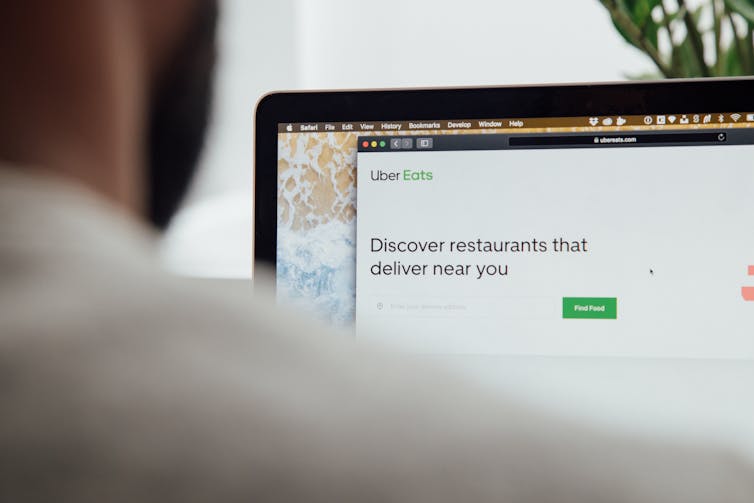Food
Capping food delivery app fees could save restaurants this COVID-19 winter
The COVID-19 pandemic has been extremely difficult on restaurants, and it’s not over yet.
Infection numbers continue to rise and the weather is getting worse. Patios are no longer an option. This means that takeout and delivery have become a lifeline for restaurants.
But delivery apps charge significant fees for orders, meaning that restaurants already challenged by reduced volumes and high costs are squeezed, often into negative margins, in an effort to access customers.
There have been calls for a reduction in the fees charged by delivery apps so that restaurants can at least maintain a delivery option during the pandemic restrictions — and survive.
Delivery companies like Uber Eats, Skip the Dishes, Door Dash and others provide not only the delivery service, but a platform for ordering. Given the relatively small number of apps and the large number of restaurants, this means delivery apps have significant market power. That’s why there’s such competition for restaurants among the apps.
Restaurants feel a need to be on the app
The bigger the share of consumers, the bigger the draw for restaurants to join the app, and the more power the app has over demand. Many customers go to the app before deciding what to order, which will become an even more common occurrence if there are more restaurants to choose from on the app.
If restaurants aren’t on the app, they lose the opportunity to sell to that customer.
The majority of delivery apps aren’t making money yet, but are fighting for share to get to a point where they’re profitable.
Some apps charge as much as a 30 per cent commission on food orders. Most restaurants work on tight margins, and these hefty delivery app fees often mean there’s no profit left for them after they pay the delivery company. This means they get caught between a rock and a hard place in making the choice to access an app — sell nothing or sell through the app and lose money.

(Charles Deluvio/Unsplash)
Part of the problem is that the delivery companies aren’t making money either. Foodora actually pulled out of Canada earlier this year. Uber Eats is a bigger business than Uber Rides but is not yet profitable. Asking Uber Eats to discount fees would be asking them to lose more money in order to support the restaurants.
It’s also worth noting that a portion of the delivery fee goes to an independent driver, who’s also a low-wage earner. It’s estimated that drivers earn approximately US$8 to $12 an hour, after car expenses, delivering for Uber Eats depending on the market and time of day.
Read more:
California’s gig worker battle reveals the abuses of precarious work in Canada too
That means reducing delivery app fees would take money from someone who’s already in a low-income situation.
The real issue is that the business model doesn’t work.
The pricing model doesn’t cover the costs associated with delivering. Delivery apps are trying to build the delivery market, so higher pricing slows growth. It is, however, extremely difficult to raise prices later once people develop an expectation of low delivery costs.
Now may be the time to raise prices
Nonetheless it might be worthwhile now to begin building a sustainable pricing model in increments. The value associated with delivery has never been higher, given the reticence to eat in restaurants during the pandemic. It makes sense to start moving prices up slowly to reflect the real cost of these services.
There’s also merit to the idea of app companies and delivery drivers sharing some of the pandemic pain with restaurants. The delivery app model requires restaurants to succeed, after all — without them there is nothing to deliver.
Delivery demand has been increasing, so attracting more customers and restaurants should be a strategic priority for these companies. Reducing delivery fees for restaurants is one way to do so.
There have been initiatives by delivery companies to respond to concerns raised by restaurants.
Skip the Dishes instituted a rebate program on both takeout and delivery to reduce fees during the pandemic. This helps restaurants in times of crisis, helps Skip the Dishes maintain and grow its customer base and keeps a larger variety of restaurants on the app.
Uber Eats has introduced a delivery-only function at a reduced service charge. In this case, restaurants take the orders themselves and just use Uber Eats to deliver the food.
This makes sense for restaurants with loyal customers who directly contact them. It allows restaurants to use delivery services without using the app’s ordering infrastructure while delivery companies can continue to employ drivers.

(Norma Mortenson/Pexels)
Uber Eats has also introduced a zero commission for pickup orders. In this case, customers order on the app and opt to pick up their meal themselves. This helps restaurants and drives traffic through the app (at a very low marginal cost) while also keeping a wider range of restaurants on the app that may not have otherwise been able to afford the delivery fees.
The restaurant industry needs a long-term, sustainable business model for delivery. But carefully structured and implemented short-term regulations may level the playing field and help restaurants survive this critical period. Flexibility is in everyone’s best interest.
Caps proposed
Ontario has proposed caps of 15 per cent on delivery (intended to maintain the incomes of the drivers). New York City and other jurisdictions have already done so. This will help restaurants.
But — pardon the pun — there is no free lunch, and caps will cost delivery companies money. They may be forced to drop restaurants that aren’t generating volumes and are costing too much. There’s also a risk that delivery companies will leave unprofitable or more restrictive markets. That helps no one. Regulation is complex, and the outcomes don’t always reflect what the objective was.
A better approach may be launching delivery-only companies or delivery co-operatives.
For most restaurants, the volume of delivery and the associated cost doesn’t justify a dedicated delivery person. The co-ordination of delivery without the ordering platform could give restaurants a more affordable choice and allow them to maintain the customer relationship.
Innovative thinking along these lines could results in affordable lifelines for some restaurants.![]()
Michael von Massow, Associate Professor, Food Economics, University of Guelph
This article is republished from The Conversation under a Creative Commons license. Read the original article.





















